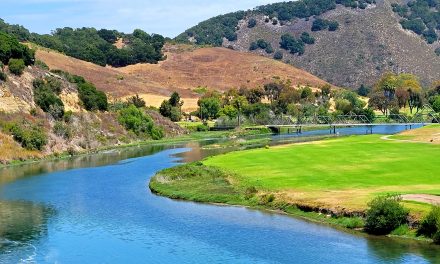If you are a sushi lover, good chance, your rice came from California’s Sacramento Valley. The area produces around two-thirds of the country’s medium and short-grain rice, the kind used in sushi. Rice is a 5 billion dollar California industry and provides for 25,000 jobs. In an article by Ximena Del Cerro in Bloomberg, the crop is down 20 percent and the smallest in almost 30 years. The problem is water. There isn’t much even for those with 170-year-old water rights which are under assault.
This year’s drought is so extreme that California regulators in August have voted to restrict water from the rivers, especially the Sacramento River, for many farmers to protect drinking water supplies. This is resulting in many rice growers having to cut their acreages in half. Further down the line, all over the State that grows a third of the vegetables and two-thirds of the fruit in the country, growers have had to cut back growing crops because little water, in many cases none from the State’s and Federal canals, is available. Almonds, normally a 25-year crop, are being pulled out, especially along the I-5 corridor where they shouldn’t have been planted in the first place because of the scarcity of water in recent drought years.
Our recent drought is one of the worst of the historic droughts since 1841, and there were certainly many more, perhaps even worse, before then. There have been 14 dry periods with much below annual rain and nine severe droughts. The worst drought periods have been in 1841, 1863 – 64 (Rancheros suffered major cattle losses), 1924, 1928 – 37 (Depression and Dust Bowl), 1976 – 77, 1990 – 92, 2007 – 09, 2011 – 17, and now. Some think the last one never really ended.
The recent water restrictions are also problematic with an important component of sushi, while we are talking about it, and that is the drought’s effect on the native salmon. Not much water for them also. Low water levels and hot weather have raised the river temperatures so much that the juvenile endangered salmon could be cooked to death this Fall.
Wars of the twenty-first century will be fought over water.
~ Ismail Serageldin
However, truckloads of fish are being hauled to cooler water spots by the Fish and Game in hopes of saving some. Hotter and drier weather causes a drain on reservoirs and starves the crops also. So, the water fight is getting pretty fierce because multibillion-dollar industries are fighting over little available water. There just isn’t enough for everyone, including for you, to get it out of your faucet. So, in that one little sushi roll, you have the rice, salmon, tuna, avocado, crab, shrimp, cucumber, all dependant on the same water which flows from the mountains, eventually replenishing the ocean and wrapped by seaweed which is under attack by the purple urchin—do ya think you are going to have to pay more?
One of those “coulda, shoulda” things that could have been done by now to help farmers and especially the fisheries because it allows for discharges in the summer/fall to help the salmon survive is the installation of the off-stream 14,000 acre Sikes Reservoir 14 miles from the Sacramento River west of Colusa. This project has been kicked around since 1980 and has been held up by environmentalists and other types of concerned adversaries. It would take out water from the river and pipe it to the reservoir during the heavy winter flows of the river before it ends up wasted in the ocean, which doesn’t need it.
A 50 million dollar study from 1996 to 2014 (18 years!) has come up with a 5.2 billion dollar plan to begin construction in 2023 to 2030 paid by the State and water agencies. You would have to think it shouldn’t take that long to come up with a plan and be so expensive, but it is probably common for the State to drag out projects saddled more so with their own environmental restrictions. A great example would be fixing the roads up to Hearst Castle that were compromised by the same storm in January as the much bigger job to fix the 150-foot hole in Hwy 1. The State Parks and Rec Department is still dithering on how to fix the Hearst problem and costing millions of dollars of lost revenue to the State and businesses along the road while Papich went in and fixed the Hwy 1 problem in three months, two months ahead of schedule, and on budget to boot. The same success with John Madonna’s crew at Mud Creek on Hwy 1, a much bigger wipeout a few years ago. Isn’t wonderful when you can let private enterprises jump in during emergencies, push the bureaucrats out of the way, and get the job done.
Back to the Sites Reservoir, the Feds and State bureaucrats are fighting over the environmental restrictions, so it will probably be stalled again plus cut down on size because of the price, which doesn’t make any sense with the desperate need for water. You would think the present and past droughts would give some emphasis to build the whole dam project now!






